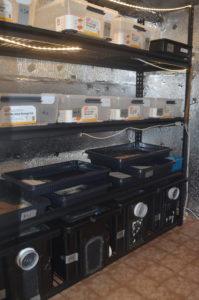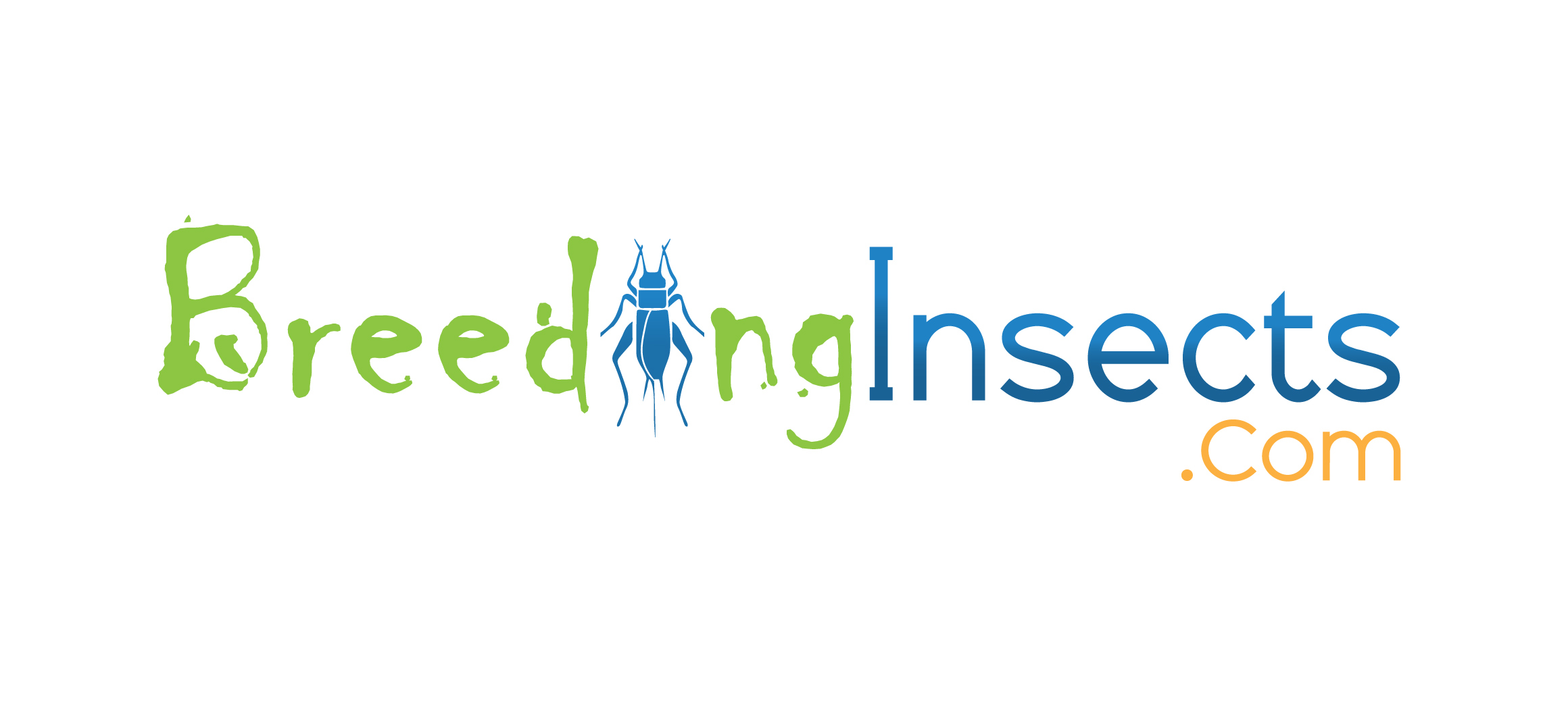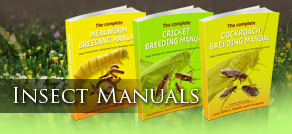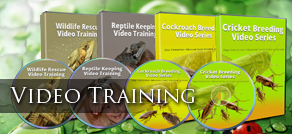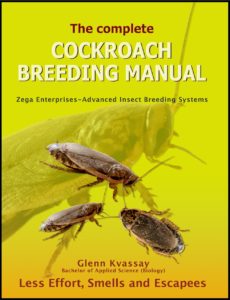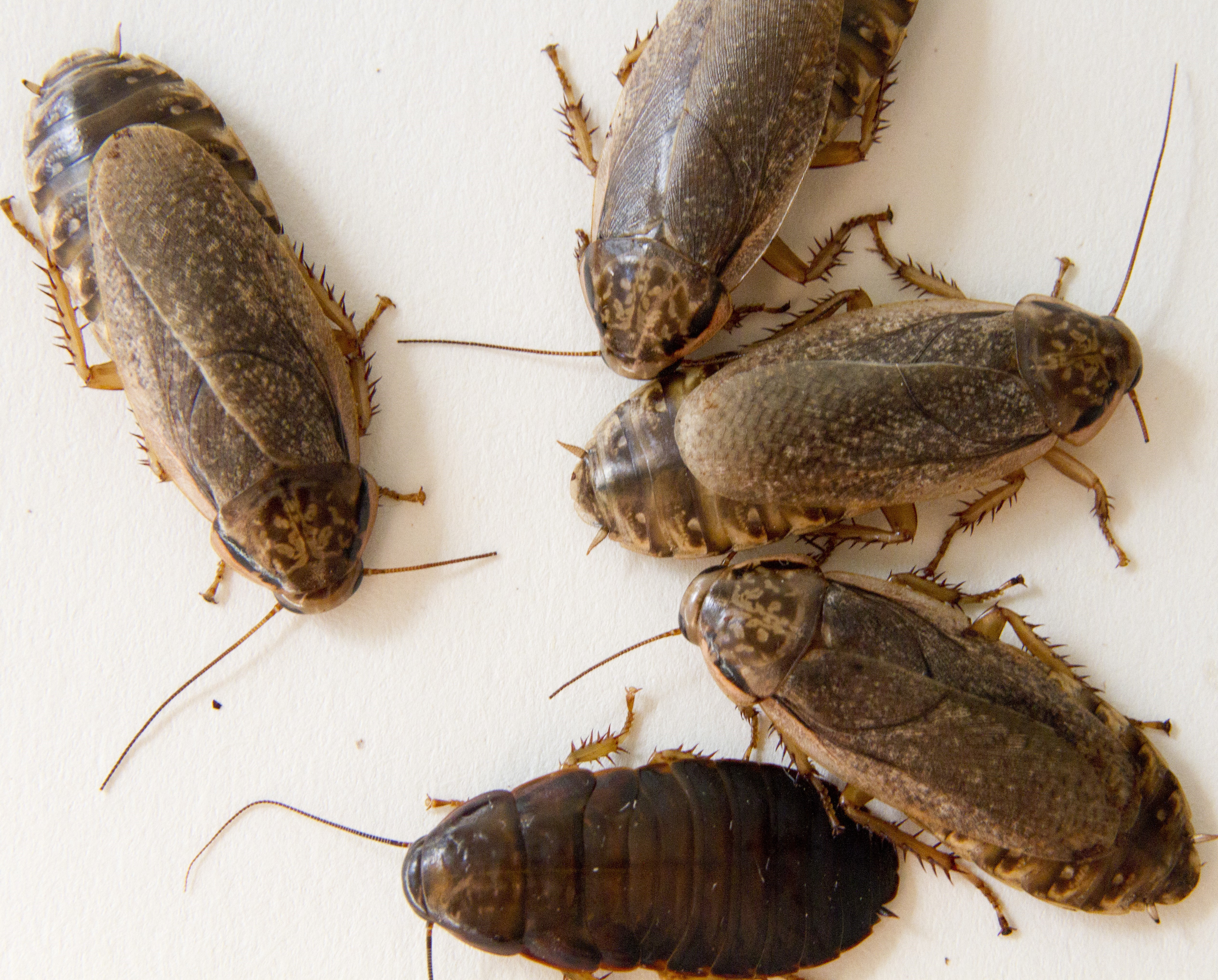
Lesson 6- Temperature and Heating
Temperatures
Heating is an important factor which influences the growth rate and life span of cockroaches. In general terms, the higher the temperatures, the faster the growth rate and shorter the lifecycle. Whilst larger cockroaches have the ability to survive temporary fluctuations in temperature, eggs and young cockroaches require more consistent temperatures and humidity.
Cockroaches can survive a range of temperatures, however optimal grown is found in a relatively narrow temperature range of 30-35 degrees Centigrade (90-95 degrees Fahrenheit). Productivity and breeding consistency will reduce as you move away from these preferred temperature ranges. In the heat of summer I have had container temperatures exceeding 40 degrees Celsius (104 degrees Fahrenheit) with no deaths. To do this you need good container design which improves air flow, food and water dispensers which provide unlimited water. These methods are outlined in our books.
Another important factor to manage with cockroaches is humidity. To learn more about managing humidity visit out Humidity page.
Heating Methods
Below is a summary of two heating methods (4 systems described in our book). For full details visit our Heating Methods page:
Heat Lamps/Heat Emitters

A heat lamp is an incandescent light bulb (top photo, below). A heat emitter is a ceramic element which emits heat but no light (bottom photo, below). The advantage of a heat emitter is that it is more robust, will last longer, and is more heat efficient. The disadvantage is it is more expensive.
Although commonly used, they are not my preferred heating method as they don’t heat substrate adequately, are not user friendly (get tangled in cords) and can be a potential fire risk.
Heat Mats and Heat Coils

My preferred heating method for small/medium scale production (for rooms that are not temperature controlled) are heat mats or coils. A heat mat is a large mat which sits under the container. Heat Coils are a long plastic coated coil (like a long rope) which can be placed underneath the breeding container. These are the preferred heating choice as they heat the substrate the best, are efficient (heat rises up through the container from the bottom, and are user friendly and safe to use.
Information in our Manuals…
There is a lot more to this important topic, and luckily our manual goes through all the options with lots of photos and diagrams. Below is a summary of the “Heating and Storage” sections of our Cricket and Cockroach Breeding Manual:
- Tables which provide the various temperature thresholds to manage an insect colony
- Advantages/disadvantages for 4 different heating systems including free solar options. Find out the best method for productive cockroach production.
- Learn the thermodynamic principles for efficient heat conservation.
- 20 methods to reduce your heating costs.
- How to estimate your heating costs and manage excessive heat.
- How to store cockroach containers so they are easy to access, and feeding can be done without opening the lid. This will allow numerous containers can be stored into a tight configuration, to save space or to increase the number of containers.
To learn all the tips and techniques to be proficient at breeding cockroaches you can purchase the manual from our website Here. We provide you with full video training (Skype, Facetime) and email support to make sure you succeed. In tomorrow’s lesson we will show you how to streamline cleaning and to prevent pest from destroying your colony. We will be in touch soon.
The Worlds most Comprehensive Cockroach Breeding Guide
With around 100 pages and 145 color photos our cockroach breeding book set the benchmark for cockroach breeding. To see why our book is the most comprehensive book you can buy on the topic, click Here or to purchase click Here. In this link we will provide you with:
- A Book sample with includes the books contents.
- 50 techniques our books will provide you to save time and effort.
- How to access free videos when you purchase the books
- How to breed crickets and cockroaches using the same materials.
Guided online tour of the Worlds most comprehensive Cricket Book
Why not Turn an Expense Into Income?
For Information and advice on commercial production, Click Here. We have been breeding insects to Zoos, Wildlife carers, pet stores and the public for over 14 years.
We can show you how to build a profitable insect business. See below how you can follow our latest project converting a 20 foot caravan into a profitable insect business.
